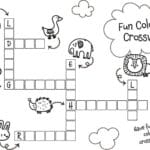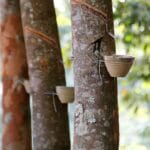So, you’re wrestling with a crossword, and the clue is “Hawaiian Goose”? Don’t throw in the towel just yet. The answer, in all likelihood, is NENE—four letters packed with a surprising amount of history and cultural significance. This isn’t just any goose; it’s the official state bird of Hawaii, a symbol of resilience, and a frequent flyer in crossword puzzles from the New York Times to the Wall Street Journal.
Decoding “Hawaiian Goose”: Why NENE is the Answer
The Hawaiian goose, more accurately known as the nēnē (pronounced nay-nay), holds a special place in Hawaiian culture and, as it happens, the crossword lexicon. “Hawaiian Goose” is a straightforward clue designed to elicit this four-letter gem, testing your knowledge of both avian trivia and Hawaiian lore. It’s like asking for the “Golden State” instead of California – a bit of shorthand that adds a layer of intrigue to the puzzle. But the nēnē is far more than just a crossword staple; it’s a fascinating creature with a story worth exploring.
The Nēnē: More Than Just a Crossword Clue
This medium-sized goose, sporting elegant black and grey plumage and a distinctive barred neck, is endemic to the Hawaiian Islands. Its scientific name, Branta sandvicensus, even offers a glimpse into history. “Sandvicensus” refers to the Sandwich Islands, Captain James Cook’s rather unimaginative name for Hawaii. The nēnē, however, is anything but unimaginative. This bird has adapted to a range of habitats, from lush wetlands to harsh volcanic slopes, happily munching on grasses, berries, and seeds.
Sadly, the nēnē’s story isn’t all sunshine and rainbows. Like the marbled cellar spider, whose life is but a fleeting two years, the Nēnē faces its own mortality challenges. These beautiful birds were once on the brink of extinction, their numbers dwindling drastically due to habitat loss and hunting. Thankfully, dedicated conservation efforts, like the Nene Goose Recovery Program initiated in 1982, have helped the population rebound. While still considered vulnerable, the nēnē’s recovery is a testament to the power of conservation.
Did you know the average lifespan of a koi fish is around 40 years? Much like the ongoing conservation efforts for the Nēnē, dedicated care contributes to the Koi’s lengthy lifespan. Both species highlight the impact we can have on the natural world.
The Nēnē in Hawaiian Culture
The nēnē’s significance in Hawaiian culture is profound. It represents strength, resilience, and adaptation – qualities deeply valued in a land shaped by volcanic activity and powerful ocean currents. The nēnē appears in traditional art, stories, and even jewelry, solidifying its place as a cultural icon. Tourists often seek a glimpse of these remarkable birds, contributing to the growing appreciation for the delicate balance of the Hawaiian ecosystem.
Conservation Challenges and Ongoing Research
While the nēnē has made a remarkable comeback, challenges remain. Habitat loss due to human development, predation by introduced animals like mongooses and feral cats, and the potential impact of climate change all pose ongoing threats. Researchers are actively studying these challenges, exploring strategies to protect nesting sites, restore native plant life, and manage predator populations. The future of the nēnē, much like the shifting sands of its volcanic home, is uncertain, but there is reason for optimism.
Threats to the Nēnē and Potential Solutions
| Threat | Description | Potential Solutions |
|---|---|---|
| Habitat Loss | Human development reduces available nesting and foraging areas. | Habitat restoration, protected areas, land management practices. |
| Introduced Predators | Non-native animals, such as mongooses and feral cats, prey on nēnē eggs and young. | Predator control programs, protected nesting sites, community education on responsible pet ownership. |
| Disease | Avian diseases can spread quickly through nēnē populations. | Monitoring and research, disease prevention strategies, rapid response plans in case of outbreaks. |
| Climate Change | Changes in temperature and rainfall patterns may impact food availability and habitat suitability. | Climate change mitigation, adaptation strategies, research on the impacts of climate change on nēnē populations. |
Beyond the Grid: The Nēnē’s Enduring Legacy
So, next time “Hawaiian Goose” appears in a crossword, you’ll not only know the answer but also appreciate the rich story behind it. You’ll understand that NENE is more than just four letters in a grid; it’s a symbol of survival, a testament to the power of conservation, and a vital thread in the vibrant tapestry of Hawaiian culture. And that, perhaps, is the most rewarding puzzle of all.
- Unlock Elemental 2 Secrets: Actionable Insights Now - April 2, 2025
- Lot’s Wife’s Name: Unveiling the Mystery of Sodom’s Fall - April 2, 2025
- Photocell Sensors: A Complete Guide for Selection and Implementation - April 2, 2025
















